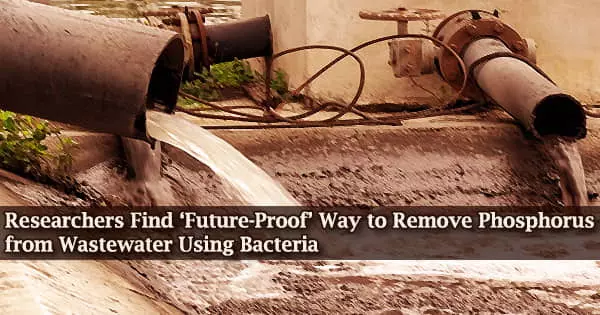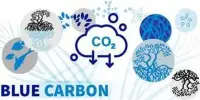Scientists from the Nanyang Technological University, Singapore (NTU Singapore) and the National University of Singapore’s Singapore Centre for Environmental Life Sciences Engineering (SCELSE) have created a method to remove phosphorus from wastewater at higher temperatures than are feasible with current techniques by using bacteria to store the chemical.
Temperatures exceeding 25 degrees Celsius, which are becoming common in warm nations, make it difficult for current phosphorus removal procedures to function well. With the onset of global warming, more countries are anticipated to experience this.
The SCELSE-developed solution, which is based on bacteria, would therefore help to “future-proof” the removal of the toxin because water reclamation plants in Singapore are home to a variety of microbial populations. This is because research has shown that at 30 and 35 degrees Celsius, it was successful in removing phosphorus from wastewater.
The bacterium genus known as Candidatus Accumulibacter takes phosphate from wastewater and stores it internally as polyphosphate granules without endangering humans or the environment. According to the researchers, both full-scale treatment facilities and reactors of laboratory scale might apply their technique.
Water is used for waste disposal; it consists of things like chemicals, oil, soap, human waste, and food scraps. This includes water from washing machines, dishwashers, toilets, showers, and bathtubs in houses. Additionally, businesses and industries contribute a portion of the used water that needs to be cleaned.
Prior to being released into freshwater bodies of water, phosphorus must be removed from wastewater because its presence can cause an algal bloom or an abrupt rise in the population of algae.
Nearly all the phosphorus that farmers use today, and that we consume in the food we eat, is mined from a few sources of phosphate rock, mainly in the United States, China, and Morocco. Our solution could not only help future-proof biological phosphorus removal but also store the element and then re-introduce it into agricultural systems.
Professor Stefan Wuertz
Algal blooms cause the release of high levels of toxins, which harm aquatic species and significantly reduce oxygen levels in natural environments as the algae die off. Water reclamation facilities close to coastal areas clean wastewater in Singapore before discharging it into the ocean.
The SCELSE-developed process for phosphorus removal from wastewater does not need chemicals, including coagulants made of iron and aluminum, like other approaches do. These techniques generate a significant amount of inert sludge that must be treated and disposed of later.
The temperature range of enhanced biological phosphorus elimination is increased to 35 degrees Celsius by the bacteria-based technique. This would aid in “future-proofing” phosphorus removal, as existing techniques relying on biological mechanisms operate best at lower temperatures and would become less efficient as global temperatures are predicted to rise as a result of global warming.
The results of the study were published in the journal Water Research in June.
NTU Professor Stefan Wuertz, Deputy Centre Director of SCELSE, who led the study, said:
“We have shown that phosphorus could be stably removed in Singapore’s water reclamation plants even as we expect global water temperatures to increase further. Employing a slow-feeding strategy and sufficiently high carbon input into biological reactors, we effectively limited the carbon uptake rates of competing bacteria.”
“This allowed Accumulibacter to flourish and benefited a stable and efficient process, representing basic conditions suitable for future full-scale treatment plants. This will help Singapore and other countries experiencing high water temperatures to prepare for the effects of climate change.”
Prof Wuertz is also from NTU’s School of Civil and Environmental Engineering.
Co-author Dr. Rohan Williams, Head of the Integrative Analysis Unit in SCELSE, said: “We found that the Accumulibacter strains in the reactors were closely related to those commonly found in temperate systems, suggesting that the chosen strategy successfully preserved the microdiversity needed for a stable process.”
He is also Senior Research Fellow at the Life Sciences Institute in the National University of Singapore.
Dr. Guanglei Qiu, a former Research Fellow at SCELSE, who also co-authored the study, said:
“Operating biological reactors side by side at different temperatures provided the clues for a mechanistic understanding and underlying changes in the microbial community.” He is now an Associate Professor at the South China University of Technology.
One of the four grand issues facing humanity is being addressed by NTU through its NTU 2025 strategic strategy, and the SCELSE-developed innovation underscores NTU’s dedication to reducing our influence on the environment.
In experimental reactors with temperatures ranging from 30 to 35 degrees Celsius, the researchers first enhanced the bacteria from wastewater while making sure the pH was close to neutral. The bacteria entirely absorbed the phosphorus during a six-hour cycle.
They discovered that phosphorus was consistently removed during a 300-day laboratory test period, handling the daily infusions of fresh wastewater that contained the element.
To increase the effectiveness of their approach, the scientists will do more study. Additionally, they are considering using the bacteria to collect and store phosphorous, which some experts predict would run out globally in 50 to 100 years.
Prof Wuertz added: “Nearly all the phosphorus that farmers use today, and that we consume in the food we eat, is mined from a few sources of phosphate rock, mainly in the United States, China, and Morocco. Our solution could not only help future-proof biological phosphorus removal but also store the element and then re-introduce it into agricultural systems.”
Coagulants are a substance which cause particles in a liquid to curdle and clot together.
















